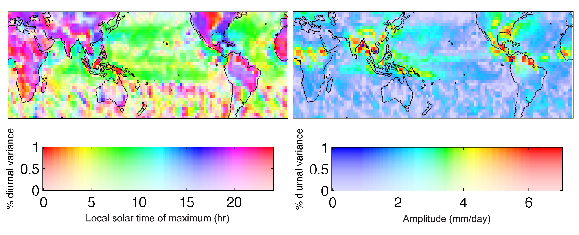In a recent blog post By Adam Sobel, he mentioned that he doesn’t use the word “skeptic” to describe those who do not accept the idea that the earth is warming due to human activity. I had never really thought about my word choice on this issue, but I like his point and many others seem to share this notion. A skeptic has to be open to being proven wrong.
Category Archives: Semantics
Semantics: Do we have to keep using “respectively”?
It would be hard to find a scientific paper that does not use the word “respectively” to be precise about the sequential referencing of previous words in a sentence. Even though it is usually “correct” to use this word, I feel that it is often unnecessary because the context gives adequate information for the reader to figure out the meaning on their own.
Semantics – “Julian Day” vs. “Day of Year”
I just learned today that the “Julian date” is not the same as the “day of year“. I realized this while reading up on the NCL function, day_of_year().
The “day of year” is also referred to as the “ordinal date“. From Wikipedia, we get a pretty simple definition that explains the difference:
“Julian day is the continuous count of days since the beginning of the Julian Period used primarily by astronomers… The Julian Period is a chronological interval of 7980 years beginning 4713 BC.”
“Global Warming” vs. “Climate Change”
A lot has been said on this topic, but I feel there is a lot left to say. I used to avoid using the phrase “global warming” in favor of “climate change“, because I thought the former was too politically charged. But after some reflection, I think “global warming” is the better term, and this post outlines my reasons. Continue reading
Semantics – Diurnal vs. Nocturnal vs. Diel
I often use the word “diurnal” when talking about daily cycles. This is somewhat of a hot topic in atmospheric science, because model’s generally do a very bad job of producing rain at the right time (Lee et al. 2007, Pritchard and Somerville, 2009). This isn’t a problem for the general problem of understanding anthropogenic climate change, but it becomes more of an issue when we want to zoom in and understand region specific effects of climate change. Below is an interesting figure from Pritchard and Somerville (2009) that uses an HSV color coordinate to describe the phasing (left) and amplitude (right) of the peak daily precipitation during northern hemisphere summer from TRMM data. There’s a lot of interesting patterns to look at here, but the great plains of the united states has a particularly interesting signal.

